Right of way & safety
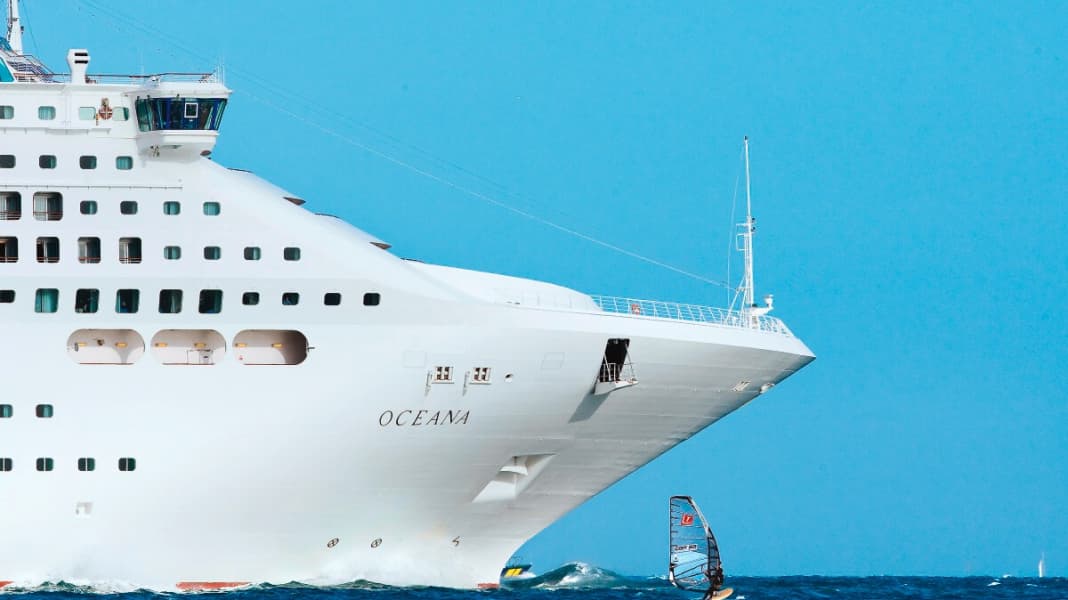
Commercial shipping traffic always has right of way. This includes excursion steamers, ferries, ships on scheduled services, inland waterway vessels, but also police and rescue boats. On inland waterways, such ships can usually be recognised by a green ball on the superstructure that is visible from afar.
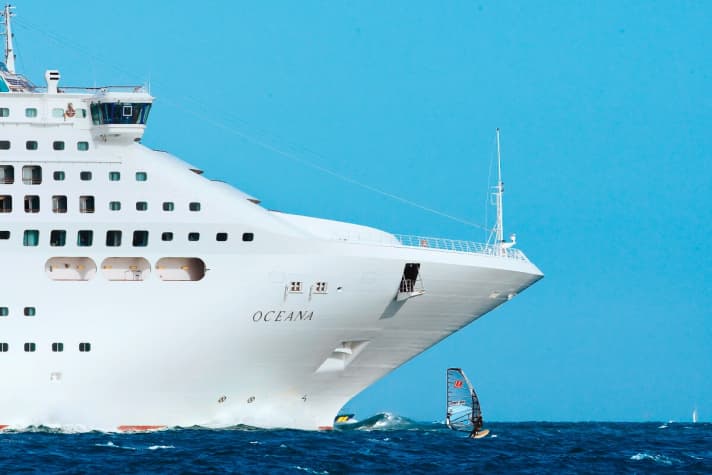
For a long time, motorboats always had to give way to sailors and surfers. In principle, this is true all over the world, except in the motorsport country of Germany. As early as 1998, the then CDU-led Federal Ministry of Transport pushed through a change in the law, according to which other laws apply in Germany within the three-mile zone:
"It used to be enshrined in international maritime law that motorised vessels, including windsurfers, always had to give way to sailing vessels. The only exception was and is commercial shipping. However, due to the change in the law, windsurfers in Germany have had the status of sports equipment since 1998, which means that they generally have to give way to motorised vehicles," explains Thomas Weinhardt from the Association of German Windsurfing and Watersport Schools (VDWS). So is it your own fault if you're sailing back and forth across the Baltic Sea in three force winds and get run over? Thomas Weinhardt explains: "It depends on the situation: If you see a motorboat on a collision course on the water, you are first of all obliged to take evasive action, the boat is obliged to stay on course. If you don't do this, you are at fault in the event of an accident. However, this does not apply if you can only manoeuvre to a limited extent, for example if there is little wind or if you are lying in the water. In this case, a boat must of course not simply flatten a windsurfer and must be able to make an evasive manoeuvre at any time.
To avoid collisions, there are three basic rules of right of way that apply to all sail-powered vessels, including sailboats.
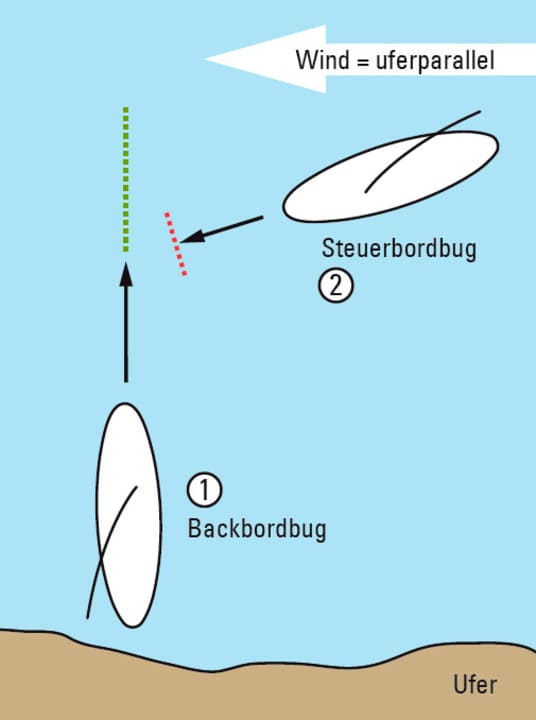
1. Port bow before starboard bow. If two surfers approach each other and have different hands in front of the mast (surfer 1 has the right hand in front; surfer 2 has the left hand in front), the surfer who has the left hand in front of the mast must give way. The rule of thumb "right hand on the mast is right" is easy to remember.

2. Lee before windward. If two surfers have the same hand at the front of the mast (here both the right hand), you need a different rule to avoid collisions. In this case, the surfer who is further downwind always has right of way, in our example this is surfer number 1. Surfer 2 would therefore have to give way.
3. course holding obligation. To ensure that the situations described above do not lead to a collision, not only must the person who does NOT have right of way give way, but the person who has right of way is also obliged to maintain their course and speed. This prevents both surfers from unfavourably swerving at the same time and causing a collision.
If you have no experience with water sports, it is easy to underestimate the forces of nature. Especially when windsurfing, this includes the strength of the wind, the current and the tides. However, if you observe the following rules, you will always be on the safe side.
Check your equipment. As with any other sport, your equipment should be in perfect condition. Torn powerjoints, worn ropes or similar can break or tear under the strain of surfing and quickly lead to an emergency situation on the water. It is always advisable to have a spare rope with you. You can wrap it around your harness hook, for example. You should also make sure you have appropriate clothing. The body cools down much faster in the water or in the wind.
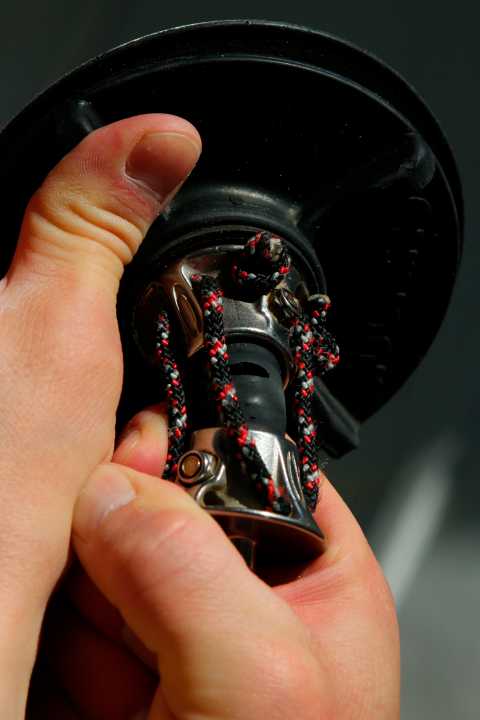
Let me know. As a general rule, you should never go out on the water alone; you should choose places where there are other surfers. Beginners should never surf further out so that they can swim back under their own steam in an emergency. Even if you are planning a longer surf trip, you should always leave the following information with friends or at the surf school: Destination of the trip, expected return, planned breaks en route, colour of your sail?
Currents. Currents are difficult to recognise from the shore and can be dangerous, as it is almost impossible to paddle or swim against them, especially with equipment in tow. Currents can also occur in inland waters, for example due to inflows and outflows. It can be life-threatening around the weirs of dams. However, these are clearly marked with warning signs.
Before you go surfing, find out if and when strong currents can occur in a particular area.
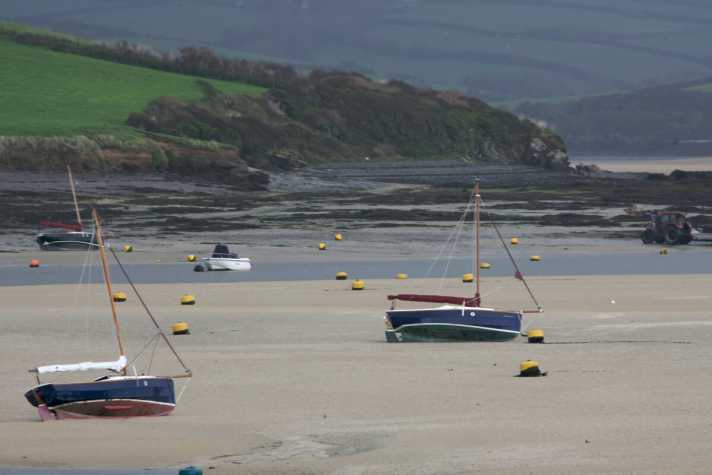
Tides. On the open sea, currents are mainly caused by tides. When the tide goes out (low tide), the water is drawn out to sea; when the tide comes in (high tide), the water pushes back towards the coast. The strongest currents occur where the tidal range (difference in height between high and low tide) is particularly large, where the water has to flow around islands or other obstacles lying in or possibly under water, in the third and fourth hours before and after high tide.
In the shore area, the current can be diverted by obstacles (sandbanks, islands, groynes) and therefore rarely actually runs directly in the direction of the tide. You can therefore by no means rely on the current running towards the shore at high tide and towards the sea at low tide.
Before you go surfing, find out if and when strong currents can occur in a particular area.
What to do in an emergency? In any case, always stick to the board, it is your unsinkable life raft! If you are not sure whether you can reach the shore by paddling, leave the sail in the water as it minimises drifting like a floating anchor. You should only paddle back if you are sure you can manage the distance without any problems.
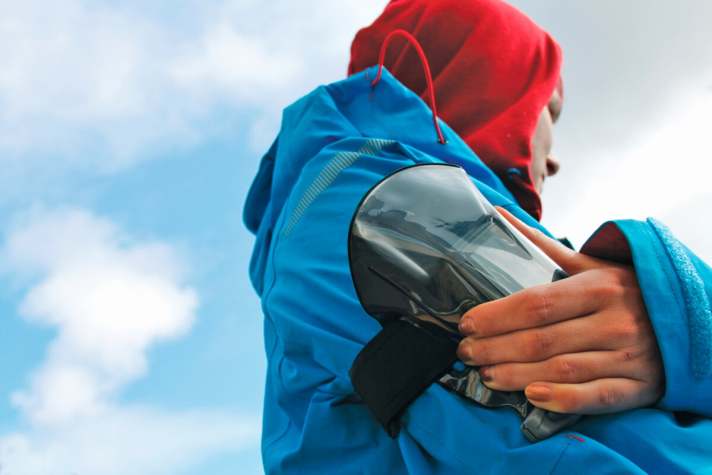
To paddle, you must lift the rig out of the water and place it with the fork on the stern of your board so that it no longer hangs in the water and brakes. You may also have to take it down or even give it up so that you can paddle back to land with just your board.

Call for help. There is no shame in calling for help! The distress signal must be given clearly and visibly so that a rescue can be initiated quickly. You have two options:
A) Sitting, kneeling or standing on your board, slowly wave your outstretched arms up and down.
B) Or you can wave a brightly coloured object, for example your trapeze.
Give distress signals until you are sure that help is on its way to you. You should also hoist your rig at regular intervals. This will make it easier for your rescuers to spot you in the swell or against the glaring light. Always stay on the board. This will save you energy and help rescuers find you more quickly.
Helping others. If you see another surfer giving distress signals, you are obliged to help. If you are unable to help yourself, inform other rescuers immediately. Make sure that you do not lose sight of the person in distress.

